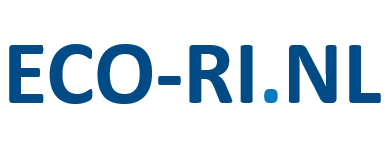Aquatic Sensing Facility (Aquasense)

Details
- Infrastructure type
- Ecotron outdoor
- Institute
The facility
AquaSense is an outdoor aquatic facility (10 × 4 meters, depth 0.5–2 meters) designed for education and research in water quality monitoring using remote sensing techniques. It provides a controlled environment for measuring radiance, and other bio-physical properties of water, supporting hands-on learning and experimentation in hydro-optical modeling, sensor calibration, and aquatic system analysis.
Research topics
The facility is designed to support measurements in aquatic systems, focusing not only on biogeophysical variables within the water column, but also on broader aspects of lake ecology, such as biodiversity, primary productivity, and trophic interactions.
References
Tavora, J., El Hourany, R., Fernandes, E. H., Jalón-Rojas, I., Sottolichio, A., Salama. S. M., & van der Wal, D., (2025). Quantifying the Relative Contributions of Forcings to the Variability of Estuarine Surface Suspended Sediments Using a Machine Learning Framework. Continental Shelf Research, 287, 105429. https://doi.org/10.1016/j.csr.2025.105429
de Fockert, A., Eleveld, M. A., Bakker, W., Felício, J. M., Costa, T. S., Vala, M., Marques, P., Leonor, N., Moreira, A., Costa, J. R., Caldeirinha, R. F. S., Matos, S. A., Fernandes, C. A., Fonseca, N., Simpson, M. D., Marino, A., Gandini., E., Camps, A., Perez-Porto, A.,, Gonga, A., … & de Maagt, P. (2024). Assessing the detection of floating plastic litter with advanced remote sensing technologies in a hydrodynamic test facility. Scientific Reports, 14, 25902. https://doi.org/10.1038/s41598-024-74332-5
Mahama, P. N., & Salama, S. M. (2024). Calibration and validation of the HydroColor and Citclops smartphone applications for water quality monitoring. Heliyon, 10(9), e30100. https://doi.org/10.1016/j.heliyon.2024.e30100
Simão, R., Távora, J., Salama, M. S., & Fernandes, E. (2024). Optimizing Optical Coastal Remote-Sensing Products: Recommendations for Regional Algorithm Calibration. Remote sensing, 16(9), Article 1497. https://doi.org/10.3390/rs16091497
Tavora, J., Acunha Gonçalves, G., Fernandes, E. H., Salama, M. S., & van der Wal, D. (2023). Detecting turbid plumes from satellite remote sensing: State-of-art thresholds and the novel PLUMES algorithm (2023). Frontiers in Marine Science, 10, 1215327. https://doi.org/10.3389/fmars.2023.1215327
Running period
This facility has recently been established and will operate from October 2025 through 2050.
Equipment
The setup includes a basin equipped with a metal bridge that supports radiometric sensors above and under the water. In addition to water quality sensors submerged below the surface. Both the bridge and the underwater sensors are designed to be mobile, allowing flexible positioning and measurement across the basin.
Data management
The facility adheres to the FAIR principles (Findable, Accessible, Interoperable, and Reusable) for all data collected. This includes radiance and irradiance measurements above and below the water surface, as well as a wide range of in-water water quality parameters (e.g., turbidity, chlorophyll-a, dissolved oxygen, temperature, etc.).
All datasets will be:
Findable: Each dataset will be assigned a unique and persistent identifier (e.g., DOI), accompanied by rich metadata following internationally recognized standards such as ISO 19115 or INSPIRE-compliant formats.
Accessible: Data will be made publicly available via an open-access institutional repository or a trusted data archive (e.g., PANGAEA, Zenodo, or the Dutch National Data Archive for Earth Observation). Access conditions and licensing (e.g., CC-BY or CC0) will be clearly specified.
Interoperable: Data will be provided in widely supported formats (e.g., NetCDF, CSV, or HDF5) using controlled vocabularies and ontologies (e.g., CF conventions for environmental data) to ensure compatibility with other systems and models.
Reusable: Metadata will include detailed descriptions of data collection methods, calibration procedures, sensor specifications, and quality control processes to ensure transparency and reproducibility.
A comprehensive Data Management Plan (DMP) is currently being finalized and will be published on the official website ahead of the facility’s operational launch in October 2025. A link will be provided once available.
Available datasets
Data collection at the facility is expected to commence in October 2025.
Conditions for access
Access to the facility is coordinated through the Principal Scientist, Dr. ir. Suhyb Salama. All usage requests and collaborative arrangements must be made directly with him.
As the facility also serves educational purposes, access will be scheduled in coordination with the teaching calendar. Availability may be limited during periods of planned training sessions or student-led fieldwork.
In general, access is subject to cost recovery, which includes operational expenses, maintenance, and technical support hours. Detailed terms and cost estimates will be provided upon request and may vary depending on the scope, duration, and type of use (educational, research, or commercial).
Details
- Infrastructure type
- Ecotron outdoor
- Institute



